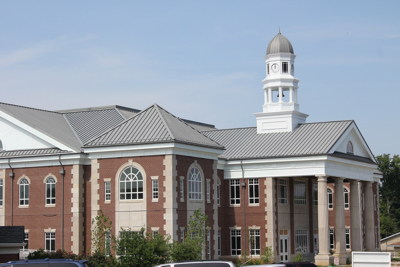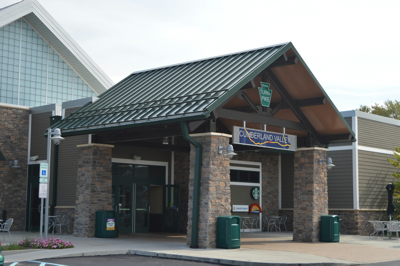 By Joe Mellott, IMETCO
By Joe Mellott, IMETCO
After spending the majority of my career in the low slope roofing industry, I was always fascinated by, and perhaps a bit jealous of, my partners in the steep slope metal world. The colors, the profiles, the substrates…it just really seemed a bit more “sexy” than minerals, coatings and rocks. When an opportunity presented itself to become more involved in steep slope and metal, I jumped at it. After more than a year in this portion of the market, I have yet to become bored with the options, aesthetics and durability that metal can offer. However, it is not surprising that many of the waterproofing and design work needs are similar between flat roofing and steep slope roofing. Further, many of the steps and quality measures are the same for achieving success.

|
IMETCO offers expert assistance to design professionals and contractors to ensure its metal roofing systems look great and perform as expected. |

|
Underlying Conditions
In many cases, roofing is done as part of the restoration of a building. In all cases of restoration it is important to consider the existing substrate. Making sure that the substrate is in condition for restoration is critical to success. Going over wet insulation or damaged decking is always a recipe for failure. Always replace damaged decking and wet insulation. Also make a best effort to determine the root cause of the water intrusion or damage to the deck. Putting a beautiful new metal roof over an existing problem is a poor use of time and money.
Don’t forget that while the metal roof will serve as the primary waterproofing layer, the substrate in many cases serves as a secondary layer of protection. Considering all substrate conditions is the first step in avoiding costly downstream repair or replacement.
Environment
Never under estimate the power of the environment, both on the outside of the building and in some cases on the inside. Always consider the substrate you have chosen—whether it be aluminum, steel, zinc or copper—and how it may respond to a given building's environment. Specifying steel near the coastline may not be the best idea; consider aluminum in coastal environments. Understanding that copper and zinc can patina differently based on environmental conditions can help the design team determine the short- and long-term appearance differences.
Consider the industry around the facility. Caustic environments or areas where there are high levels of acidity in the precipitation (acid rain) may not be best for the long-term performance of a steel roof. Where internal environments involve highly caustic or acidic processes, such as paper, food or chemical production, attention needs to be paid to the metal roof and its exposure to emitted chemicals. While many metals have protective coatings applied as part of their finishing process, it is important to have the discussion with a quality supplier with regard to the environment of use.
Warranties
It’s important at this point to consider warranties. Many of the previously mentioned environmental conditions can result in the voiding of the finished warranty or watertight warranty. As with low slope roofing, warranties come in a wide variety of lengths and vary in the types of coverage. Paying special attention to the coverage and specifically the exclusions can help to avoid confusion or conflict over warranty provisions. It is also important to note that most warranties include exclusions for standing water, excessive snow loads and usually place a ceiling on the wind speed allowances.
Wind, Snow And Rain
As part of any good design, specification and install it is critical to perform wind uplift, snow load and drainage calculations. Making sure that the clip spacing is designed to adequately manage normal to extreme wind events helps to guarantee the performance of the roof and protect adjacent facilities and populations from roof blow off. A properly designed metal roof can withstand extraordinary wind events while a poorly designed system can lead to premature failure. Taking the time to consider snow loads and drainage plans also help assure performance. Installation of snow guards to eliminate hazardous sliding ice and snow is necessary to protect employees and pedestrians near the building. Failing to manage rooftop drainage could result in deflection, water intrusion or even catastrophic failure.
Working with qualified manufacturers and designers to properly perform these calculations is critical to short- and long-term safety and performance.
Proper Installation
All the planning in the world cannot take the place of proper installation. Choose experienced contractors and manufacturing partners to secure the best team for your metal installation. Many manufacturers have specialized contractor approval processes and training requirements. Asking a few simple questions about the installer's experience can head off serious long-term problems.
At the end of the day, steep slope roofing clearly has many of the same needs and concerns as low slope roofing. But all in all, steep slope is still much sexier.